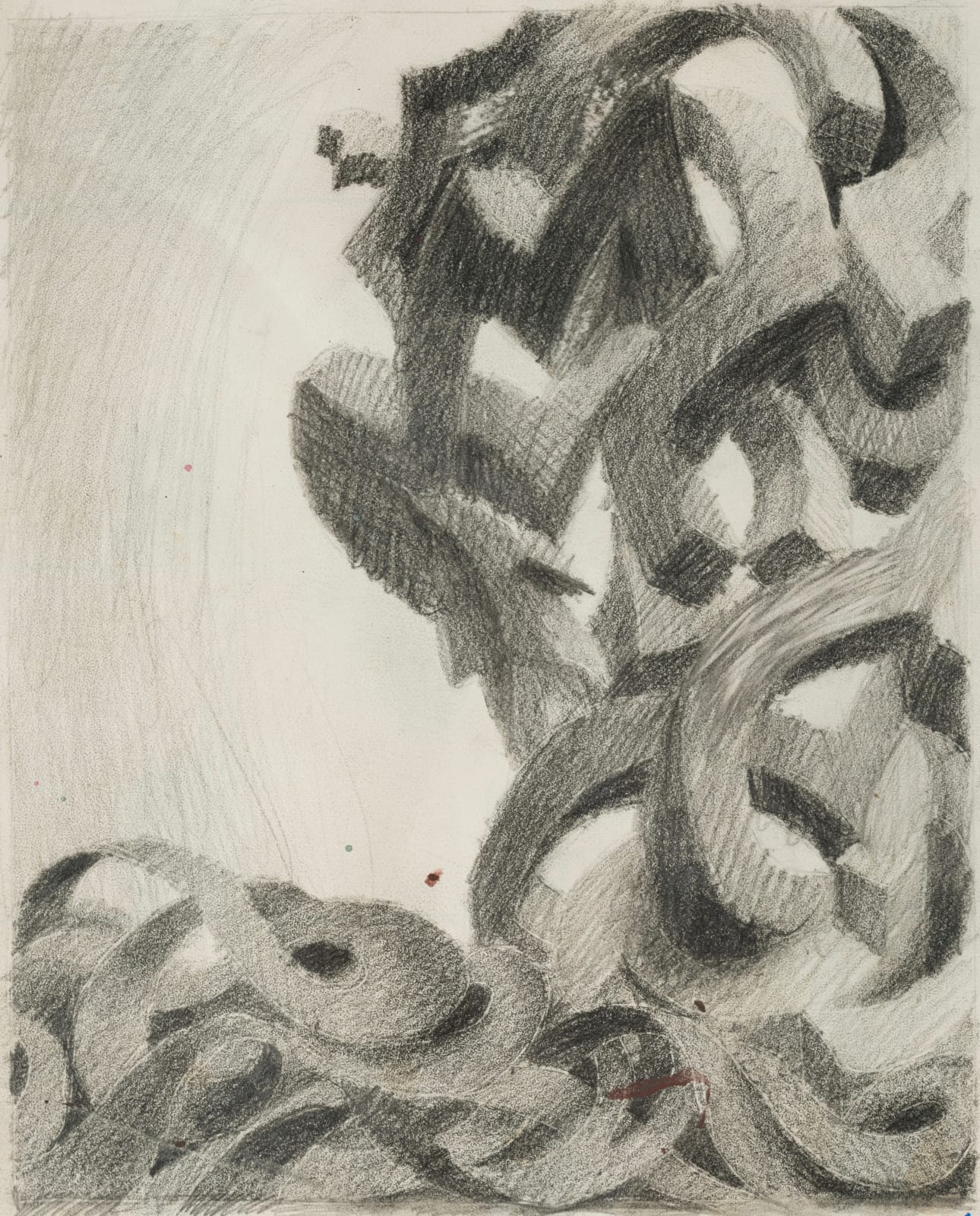-
Artworks
Henry Orlik b. 1947
SHARDPencilImage: H. 27.5cm x W. 21.5cm; H. 10¾in. x W. 8½in.
Frame: H. 46cm x W. 40cm x D. 2.5cm; H. 18in. x W. 15¾in. x D. 1in.With artist's stamp lower rightWB2579Copyright The ArtistShard is one of the last works that Orlik worked on whilst he was living in New York. He describes it as showing “the enormous strength that came out of...Shard is one of the last works that Orlik worked on whilst he was living in New York. He describes it as showing “the enormous strength that came out of me. I was really fighting then.” It came at a pivotal time for Orlik when he felt he needed a new perspective, “it was time for me to go; I’d learnt everything I know in New York”; and he had the realisation, “I can go home now and carry on”.[1]
In the painting, a beast-figure rises from a swirling morass of convoluted, intertwined ribbon-structures, to form the shape of a strong, monster-gorilla-man, leaning forward on his squatting knees. He seems to be pulling himself upwards, willing himself to take shape and give himself solidity and substance. He has the monumentality of Rodin’s sculpture The Thinker, accompanied by a fundamental beast-like elementality that wills himself into being. The strength and solidity of his coming into existence is emphasised by Orlik’s emphatic shading. The shapes seem to form letter shapes, spelling out the message of determination for survival, renewal and fundamental existence in its very essence. They are the implacable thoughts themselves that unwittingly and relentlessly compel man, and they drive the urge for survival in the determination of becoming. Orlik described the drawing as, “rising from exhaustion, in determination. I had something on my mind. I wanted to succeed.”[2]
There is another dimension to this drawing as the shapes shift to also form a full-frontal face of a man with the out-sticking knee of the monster being the ear and cheekbone, two shapes forming the nose and nostrils, shapes forming the eye-sockets and the morass of ribbon-structures forming the shoulders. In a sense, this is a more conventional ‘portrait’ of a man (although hardly conventional). This side of the figure appears calm and inexpressive compared to the monster-man, as if this is the mask that one wears under which writhes the monster of pure emotion, passion and will. It is the skeleton features – pure automaton - which are nothing without the animation of the underlying will for existence.
[1] Henry Orlik, in conversation, Saturday 31st May 2025
[2] Henry Orlik, in conversation, Saturday 31st May 2025
Join our mailing list
Be the first to hear about our upcoming exhibitions, events and news
* denotes required fields
We will process the personal data you have supplied to communicate with you in accordance with our Privacy Policy. You can unsubscribe or change your preferences at any time by clicking the link in our emails.

